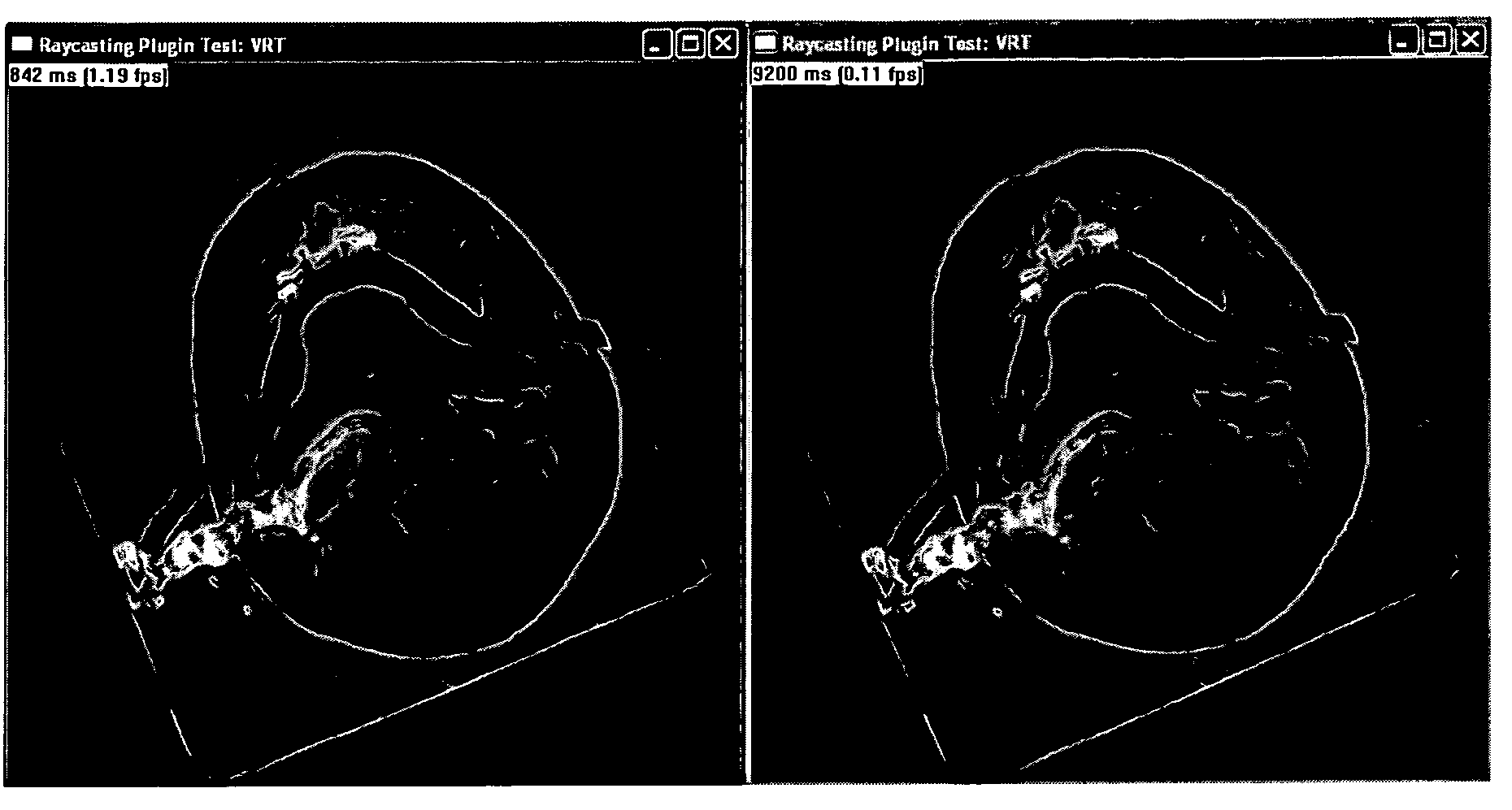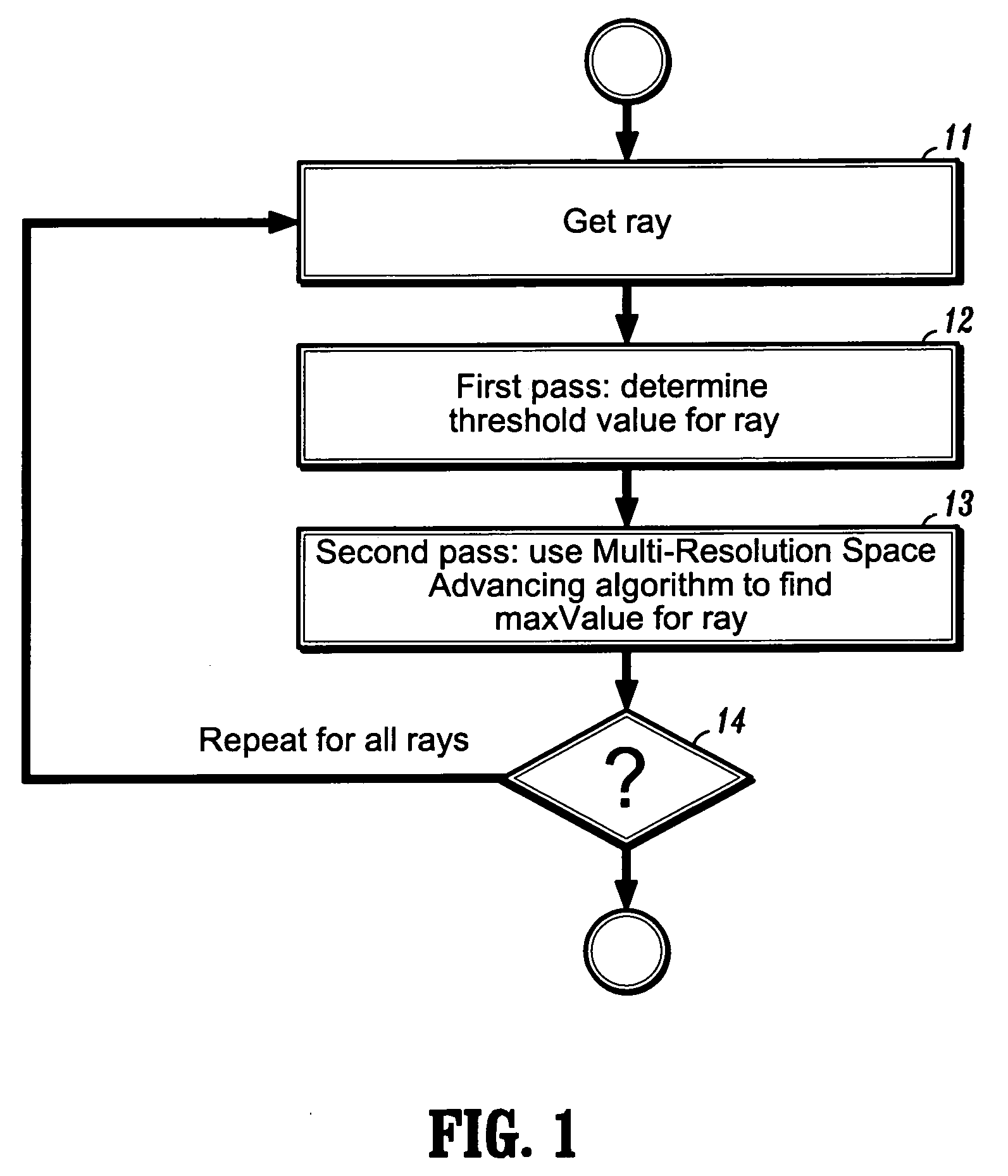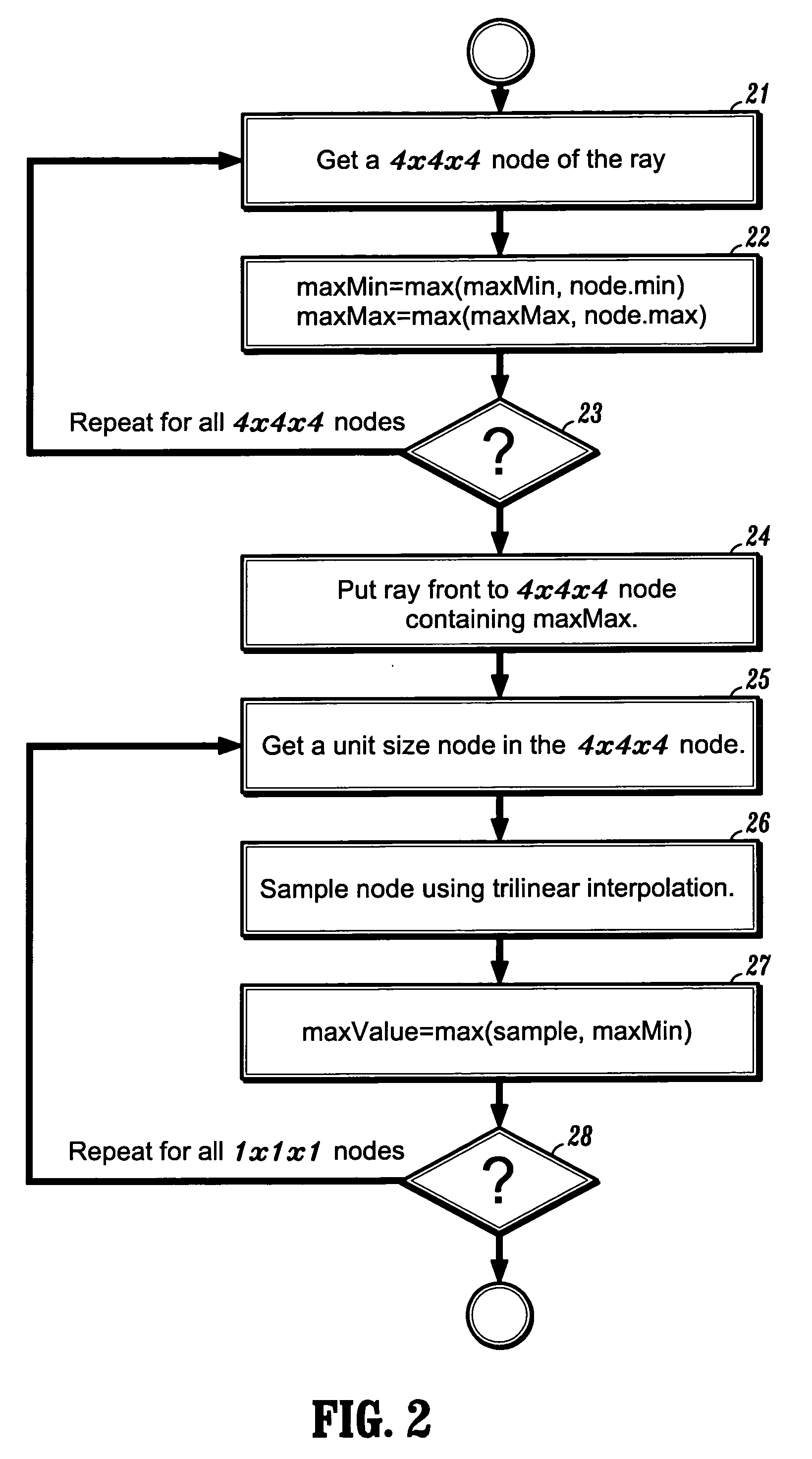System and method for fast generation of high-quality maximum/minimum intensity projections
a maximum/minimum intensity projection and projection system technology, applied in image generation, multiple digital computer combinations, instruments, etc., can solve the problems of difficult to achieve interactive rendering speed for high-quality mip, inability to apply common volume rendering acceleration techniques such as space leaping and early ray termination, intrinsically expensive mip, etc., to achieve fast volume rendering speed, minimal overhead, and fast skipping
- Summary
- Abstract
- Description
- Claims
- Application Information
AI Technical Summary
Benefits of technology
Problems solved by technology
Method used
Image
Examples
Embodiment Construction
[0029] Exemplary embodiments of the invention as described herein generally include systems and methods for reconstructing a Maximum or Minimum Intensity Projection (MIP / MinIP) using a Multi-Resolution Space Advancing algorithm and a Two-Pass Searching algorithm. Since the MIP and MinIP are complementary methods, the embodiments described herein invention will be discussed in term of a MIP. It is to be understood that these embodiments can be applied to a MinIP by those skilled in the art.
[0030] As used herein, the term “image” refers to multi-dimensional data composed of discrete image elements (e.g., pixels for 2-D images and voxels for 3-D images). The image may be, for example, a medical image of a subject collected by computer tomography, magnetic resonance imaging, ultrasound, or any other medical imaging system known to one of skill in the art. The image may also be provided from non-medical contexts, such as, for example, remote sensing systems, electron microscopy, etc. Al...
PUM
 Login to View More
Login to View More Abstract
Description
Claims
Application Information
 Login to View More
Login to View More - R&D
- Intellectual Property
- Life Sciences
- Materials
- Tech Scout
- Unparalleled Data Quality
- Higher Quality Content
- 60% Fewer Hallucinations
Browse by: Latest US Patents, China's latest patents, Technical Efficacy Thesaurus, Application Domain, Technology Topic, Popular Technical Reports.
© 2025 PatSnap. All rights reserved.Legal|Privacy policy|Modern Slavery Act Transparency Statement|Sitemap|About US| Contact US: help@patsnap.com



